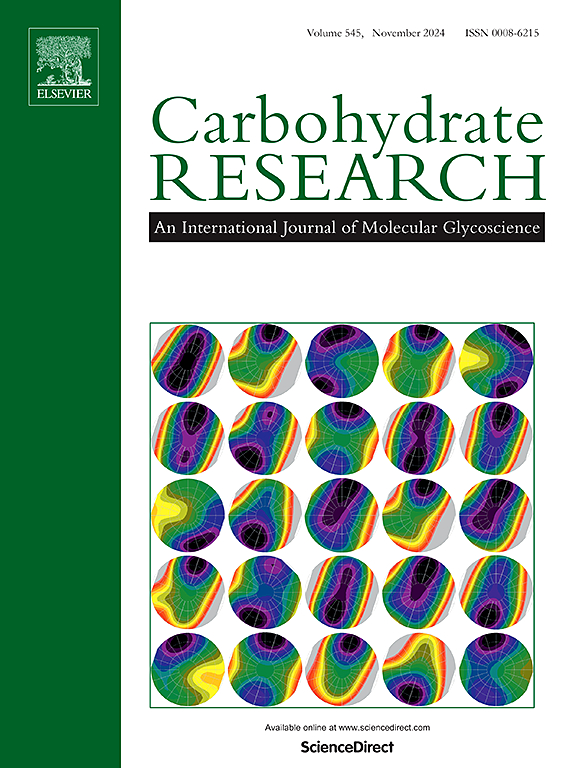Unveiling cyclodextrin conjugation as multidentate excipients: An exploratory journey across industries
IF 2.4
3区 化学
Q3 BIOCHEMISTRY & MOLECULAR BIOLOGY
引用次数: 0
Abstract
The discovery of branched molecules like dextrin by Schardinger in 1903 marked the inception of cyclodextrin (CD) utilization, catalyzing its journey from laboratory experimentation to widespread commercialization within the pharmaceutical industry. CD, a cyclic oligosaccharide containing glucopyranose units, acts as a versatile guest molecule, forming inclusion complexes (ICs) with various host molecules. Computational studies have become instrumental in elucidating the intricate interactions between β-CD and guest molecules, enabling the prediction of binding energy, forces, affinity, and complex stability. The computational approach has established robust correlations with experimental outcomes, enhancing our understanding of CD-mediated complexation phenomena. This comprehensive review delves into the CD based Inclusion complex (CDIC) formation and a myriad of components, including drug molecules, amino acids, vitamins, and volatile oils. These complexes find applications across diverse industries, ranging from pharmaceuticals to nutraceuticals, food, fragrance, and beyond. In the pharmaceutical realm, β- CDICs offer innovative solutions for enhancing drug solubility, stability, and bioavailability, thus overcoming formulation challenges associated with poorly water-soluble drugs. Furthermore, the versatility of CDs extends beyond pharmaceuticals, with applications in the encapsulation of phytoactive compounds in nutraceuticals and the enhancing flavor, aroma in food and fragrance industries. This review underscores the pivotal role of CDs conjugation in modern drug delivery systems, emphasizing the importance of interdisciplinary approaches that integrate computational modeling with experimental validation. As the pharmaceutical landscape continues to evolve, CDs-based formulations stand poised to drive innovation and address the ever-growing demand for efficacious and patient-friendly drug delivery solutions.

揭示环糊精偶联作为多齿形赋形剂:跨行业的探索之旅。
1903年,Schardinger发现了像糊精这样的支链分子,标志着环糊精(CD)应用的开始,催化了环糊精从实验室实验到制药行业广泛商业化的历程。CD是一种含有葡萄糖醛酸单位的环状低聚糖,作为一种多功能的客体分子,与各种宿主分子形成包合物(ICs)。计算研究已经成为阐明β-CD与客体分子之间复杂相互作用的工具,能够预测结合能,力,亲和力和复杂稳定性。计算方法与实验结果建立了稳健的相关性,增强了我们对cd介导的络合现象的理解。这篇全面的综述深入研究了基于CD的包络复合物(CDIC)的形成和无数的成分,包括药物分子,氨基酸,维生素和挥发油。这些复合物在不同的行业中都有应用,从制药到保健品、食品、香水等等。在制药领域,β- cdic为提高药物的溶解度、稳定性和生物利用度提供了创新的解决方案,从而克服了与水溶性差药物相关的配方挑战。此外,cd的多功能性已超出制药领域,在营养保健品中用于植物活性化合物的包封,在食品和香料工业中用于增强风味、香气。这篇综述强调了CDs偶联在现代药物传递系统中的关键作用,强调了将计算建模与实验验证相结合的跨学科方法的重要性。随着制药行业的不断发展,基于cd的制剂有望推动创新,并满足对有效和对患者友好的给药解决方案不断增长的需求。
本文章由计算机程序翻译,如有差异,请以英文原文为准。
求助全文
约1分钟内获得全文
求助全文
来源期刊

Carbohydrate Research
化学-生化与分子生物学
CiteScore
5.00
自引率
3.20%
发文量
183
审稿时长
3.6 weeks
期刊介绍:
Carbohydrate Research publishes reports of original research in the following areas of carbohydrate science: action of enzymes, analytical chemistry, biochemistry (biosynthesis, degradation, structural and functional biochemistry, conformation, molecular recognition, enzyme mechanisms, carbohydrate-processing enzymes, including glycosidases and glycosyltransferases), chemical synthesis, isolation of natural products, physicochemical studies, reactions and their mechanisms, the study of structures and stereochemistry, and technological aspects.
Papers on polysaccharides should have a "molecular" component; that is a paper on new or modified polysaccharides should include structural information and characterization in addition to the usual studies of rheological properties and the like. A paper on a new, naturally occurring polysaccharide should include structural information, defining monosaccharide components and linkage sequence.
Papers devoted wholly or partly to X-ray crystallographic studies, or to computational aspects (molecular mechanics or molecular orbital calculations, simulations via molecular dynamics), will be considered if they meet certain criteria. For computational papers the requirements are that the methods used be specified in sufficient detail to permit replication of the results, and that the conclusions be shown to have relevance to experimental observations - the authors'' own data or data from the literature. Specific directions for the presentation of X-ray data are given below under Results and "discussion".
 求助内容:
求助内容: 应助结果提醒方式:
应助结果提醒方式:


